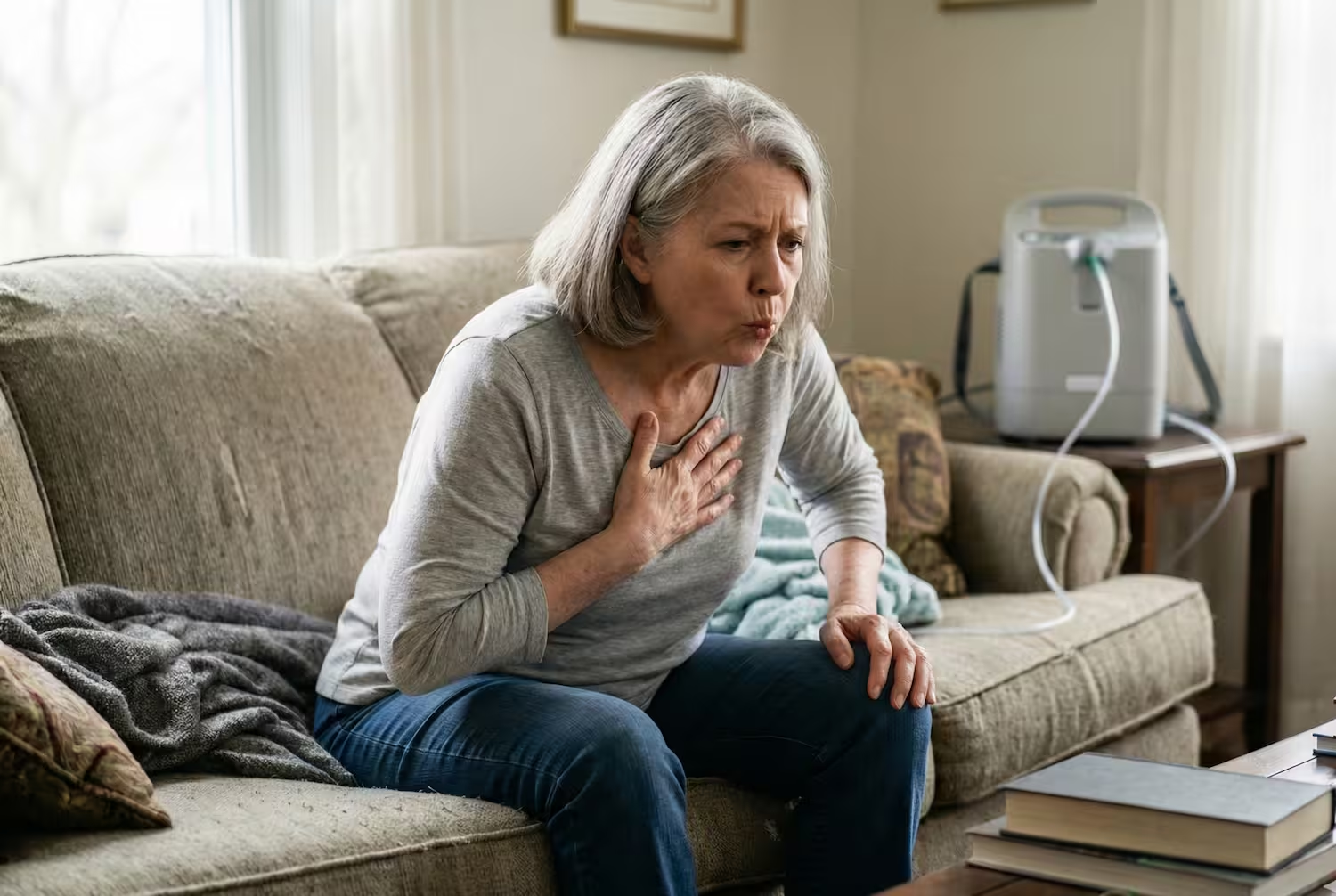
Cardiogenic shock is a severe cardiovascular condition marked by the heart's inability to pump enough blood to vital organs. It is important to understand this life-threatening situation because timely intervention can significantly alter its outcome.
Delving into the causes of cardiogenic shock not only helps us figure out the root cause but also aids in the management and prevention of further cardiac events. This article will take a close look at the causes of cardiogenic shock and its potential complications.
What Causes Cardiogenic Shock?
Cardiogenic shock often stems from many heart-related issues, each compromising the heart muscles’ functionality.
Some of these issues include:
Acute Myocardial Infarction
The most common cause of cardiogenic shock is an acute myocardial infarction, colloquially known as a heart attack. This event results from blocked coronary arteries, preventing oxygen-rich blood from reaching parts of the heart muscle. If not promptly treated, this can lead to extensive damage to the heart's muscular structure.
Coronary Artery Disease (CAD) and Blood Clots
CAD is a pervasive heart disease resulting from the build-up of plaque in the arteries, reducing blood flow to the heart. When a piece of this plaque breaks away, it can lead to a blood clot. If such a clot blocks a coronary artery, it restricts the heart muscle's blood flow, potentially causing a cardiac event.
Other Heart Diseases
Conditions like myocarditis (an inflammation of the heart muscle), arrhythmias (irregular heartbeats), and endocarditis (an inflammation of the heart's inner lining) play significant roles in the onset of cardiogenic shock. Each of these conditions can impede the heart's pumping capability, leading to reduced cardiac output.
Furthermore, the heart's right and left ventricles can also be affected by various factors. The left ventricle's primary role is to pump oxygenated blood into the body, while the right ventricle pumps blood to the lungs. Any impediments to their function can be detrimental to blood flow and pressure.
Understanding these causes is key for individuals, especially those with risk factors such as high blood pressure or a history of cardiovascular issues. Knowledge empowers one to seek timely intervention, optimizing chances for successful treatment of cardiogenic shock.
What Are the Symptoms of Cardiogenic Shock?
Recognizing the symptoms of cardiogenic shock can be the difference between timely intervention and devastating outcomes.
The foremost symptoms to be vigilant about include chest pain, a significant drop in blood pressure (hypotension), an elevated heart rate (tachycardia), and the potential for organ failure due to insufficient blood flow (hypoperfusion). You may also experience difficulty breathing, cold or clammy skin, and a pale complexion.
While chest pain and breathlessness can indicate several heart ailments, the combination of these with sudden drops in blood pressure and altered consciousness specifically hint towards cardiogenic shock.
Who Is at Risk for Cardiogenic Shock?
Cardiogenic shock does not discriminate; however, certain groups are more susceptible due to inherent risk factors.
Those Who Have Had Previous Heart Events
Individuals over the age of 65 or those with a history of previous cardiac events are at heightened risk. This is mainly because the heart, much like other organs, can become more vulnerable with age and past traumas.
Those With High Blood Pressure and Cholesterol
Elevated blood pressure over prolonged periods can strain the heart muscle, reducing its efficiency. Similarly, high cholesterol levels contribute to the development of coronary artery disease, which can culminate in a cardiac event.
Those With Underlying Heart Conditions
Diseases such as cardiomyopathy (where the heart muscle becomes enlarged or rigid) can predispose one to cardiogenic shock. Similarly, chronic heart failure increases the risk.
Those Who Make Certain Lifestyle Choices
Smoking, a sedentary lifestyle, excessive alcohol consumption, and a diet rich in saturated fats can accelerate the onset of heart diseases, indirectly enhancing the risk of cardiogenic shock.
How Is Cardiogenic Shock Diagnosed?
Quick and accurate diagnosis is paramount when suspecting cardiogenic shock. Most healthcare professionals will use an electrocardiogram to monitor heart rhythms and identify abnormalities.
In some cases, catheterization provides insights into the heart's chambers and blood flow. Given the life-threatening nature of this condition, early diagnosis can significantly influence management strategies, ensuring both patients and healthcare providers stay a step ahead.
What Are the Treatment Options for Cardiogenic Shock?
Cardiogenic shock demands swift and effective intervention. When diagnosed, the primary objective is stabilizing the patient and improving blood flow to vital organs.
Immediate treatments often include the administration of inotropic drugs, which enhance the heart's contracting capacity. Vasopressors, such as dopamine and norepinephrine, are also employed to elevate blood pressure.
To further support the heart, mechanical circulatory support devices can be introduced. These machines assist the heart in its pumping function, ensuring the body's tissues get the required blood supply.
However, there are instances when pharmacological solutions and devices might not be enough, leading to surgical interventions. Procedures like angioplasty can clear blocked coronary arteries, while the insertion of a stent keeps them open.
The intra-aortic balloon pump, another critical tool, inflates and deflates within the aorta, augmenting the heart's output. In more extreme cases, a coronary artery bypass might be deemed necessary, redirecting blood around blocked arteries.
Central to the management of cardiogenic shock is the role of intensive and critical care. Patients require continuous monitoring, and their vitals are meticulously observed in specialized units.
This high level of care, coupled with advanced treatments, forms the cornerstone in battling cardiogenic shock, providing patients with the best chance at recovery and reduced complications.
Can Cardiogenic Shock Lead to More Severe Heart Conditions?
If not promptly and efficiently addressed, cardiogenic shock can escalate to even more severe heart complications. This progression can lead to conditions like cardiac arrest, where the heart ceases to function entirely. In extreme circumstances, there's the potential need for a heart transplant.
Some patients might also require interventions like extracorporeal membrane oxygenation (ECMO) or a left ventricular assist device to help the heart pump blood. It's vital to understand these potential pathways to stay informed and make proactive healthcare decisions.
Can You Prevent Cardiogenic Shock?
Absolutely — prevention is key. While cardiogenic shock can be unexpected, managing known heart disease risk factors is a proactive step toward prevention. Regular monitoring, adhering to medication regimens, and timely healthcare consultations can reduce potential triggers, ensuring heart health remains a priority.

Cardiac Rehabilitation for Cardiogenic Shock
After surviving cardiogenic shock, the road to recovery often includes cardiac rehabilitation. Services like those from Carda Health play an invaluable role.
Cardiac rehab post-cardiogenic shock offers structured exercise, education, and support, ensuring patients reclaim their health while minimizing the risk of further heart events.
The Bottom Line
Cardiogenic shock is a severe medical emergency characterized by the heart's inability to supply sufficient blood to the body. Immediate treatments, from inotropic drugs to vasopressors, are crucial, and mechanical support devices can further assist the heart. Surgical interventions like angioplasty and coronary artery bypass can also play a vital role in managing the condition.
However, the essence of treating cardiogenic shock goes beyond these interventions. It lies in intensive and critical care, where patients are continuously monitored, ensuring their best chance at recovery. Understanding these treatment options is fundamental for both patients and their families, as timely and informed decisions can make all the difference.
Sources:
Vasopressors: Types, Purpose and Side Effects | Cleveland Clinic
Angioplasty and Stent Placement for the Heart | Johns Hopkins Medicine

.avif)






